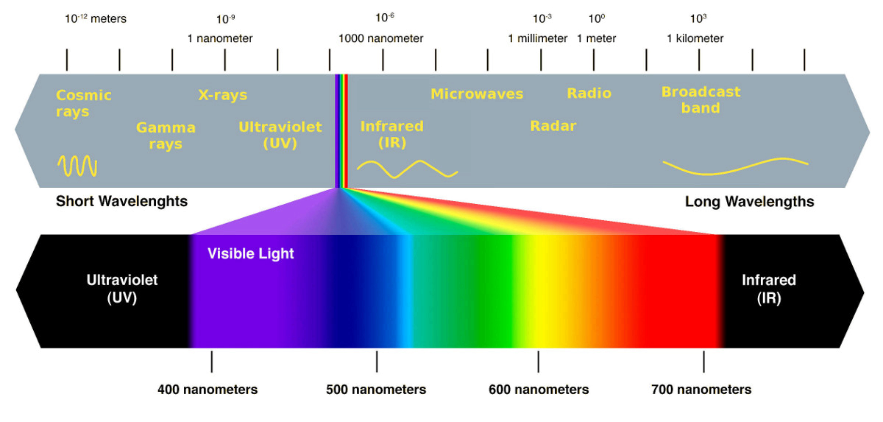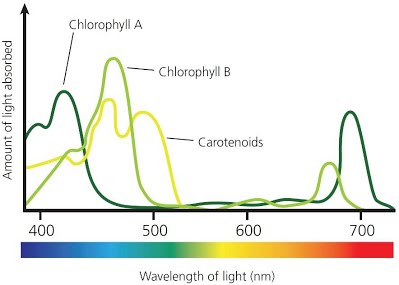What are Photosynthetic pigments?
What colours do they come in?
The energy stored in big molecules (such as carbohydrates) created via photosynthesis is derived in part through the light energy in photons. In order to tap into this energy, light must be absorbed by plants and other photosynthetic organisms.
As you know, visible light ranges in wavelength with colour:

Between 400-700 nm, light passes through several colours from violet to red. Pigments absorb some wavelengths more than others, just like anything else we see as coloured. For example, something appears yellow if it absorbs other colours like blue (500 nm) and red (700 nm) but reflects yellow (600 nm).
The two main classes of pigments in photosynthesis are chlorophyll of which there are multiple types (a, b, c, etc.) and carotenoids of which there are also multiple. The former are, surprise! Green, yellow, orange or red.

